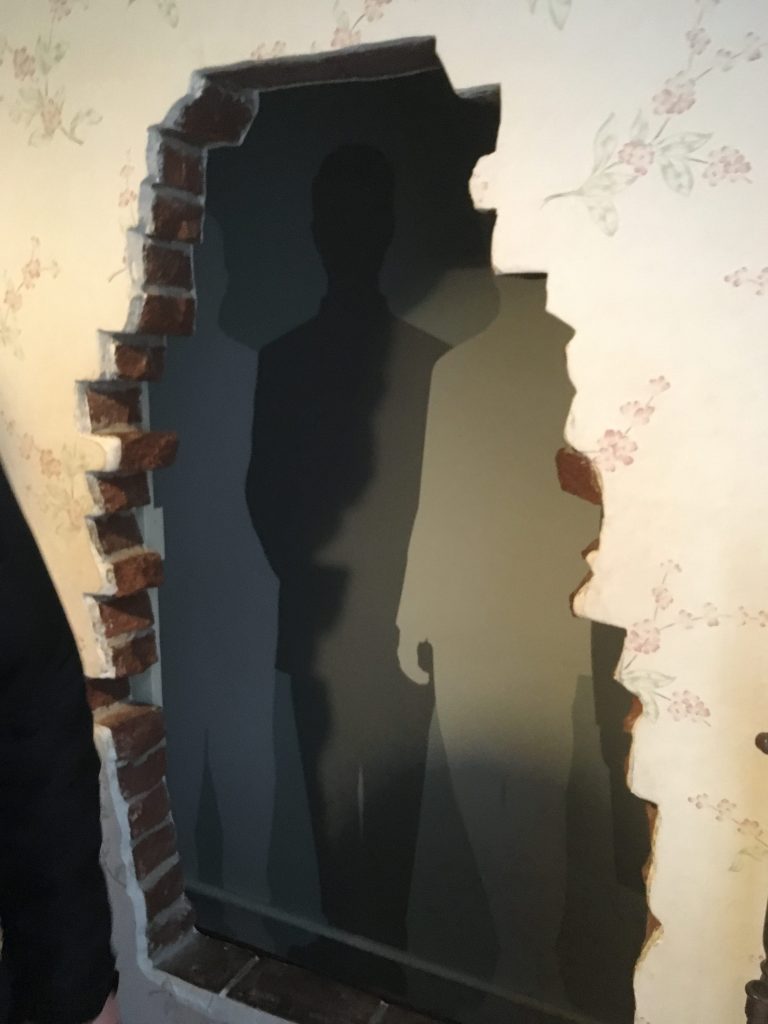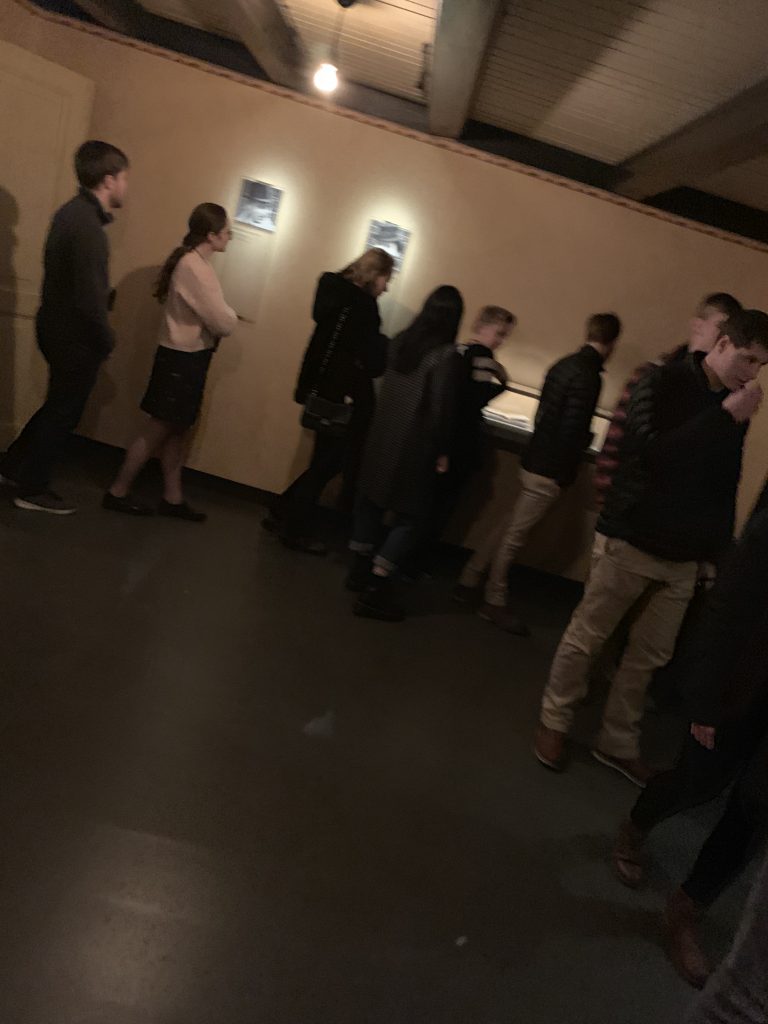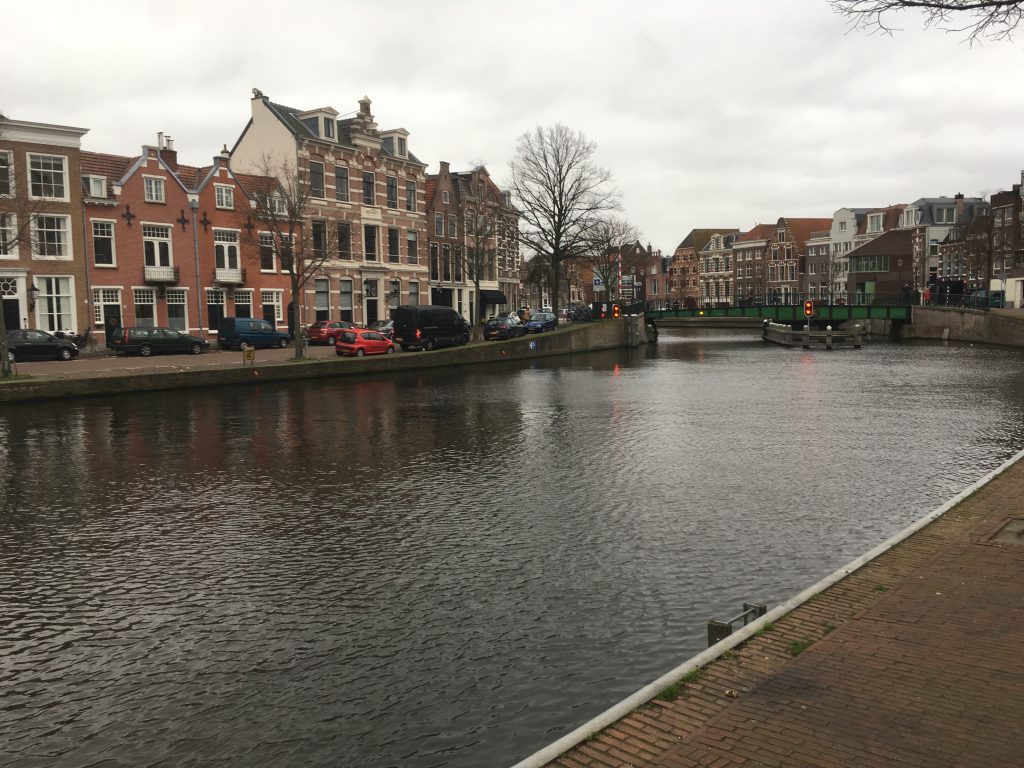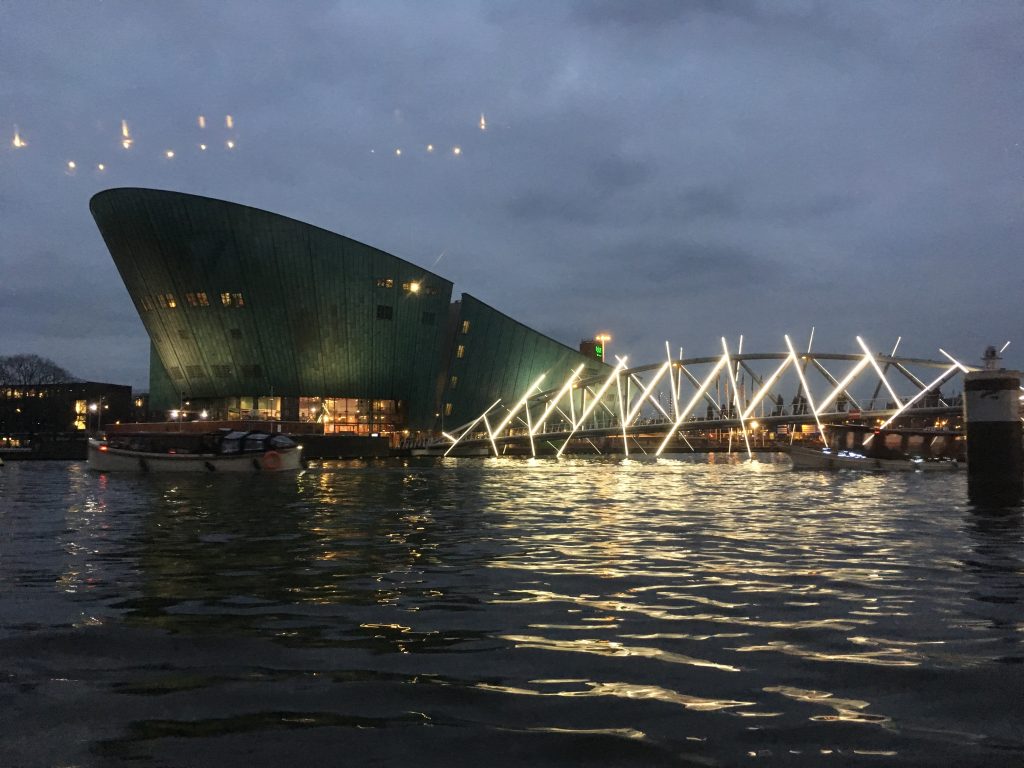Corrie ten Boom was born on April 15, 1892 in Amsterdam into a family of watchmakers and, according to some sources, devout Calvinists. Maintaining the family tradition, Corrie became the first woman in the Netherlands to be registered as a watchmaker. Our visit to her house revealed the shop was still open, under the name Ten Boom Jewelers, though it looked more commercialized for tourists. The Ten Boom family began hiding Jews in May 1942 after a woman, claiming armed guards had come to her house, appealed for help. Over the next two years, the Ten Boom family helped approximately 800 Jews evade the horrors of the Nazi concentration camps despite the police station being situated only half a block away. On the tour we were shown the hiding place, which hid six people in a twelve foot by two foot area, and was entered through a small opening hidden by the back of a bookshelf. Unfortunately, the operation was betrayed by an informant, and the Ten Boom family was sent off to the concentration camps. Spending the majority of her time in Ravenbruck, Corrie was released after 10 months due to a clerical error. It was discovered that all the women in Corrie’s age group were gassed a couple days later. After the war, Corrie founded rehabilitation centers, serving the Lord the rest of her life until she died at age 91. Much like the Ten Boom family, the tour guides were also devout Christians and often reminded their audience of the awesome power of Jesus.

Recreated Hiding Place in the Ten Boom House

The Entrance to the Hiding Place. It was Hidden by a Sliding False Back.
Anne Frank was born June 12, 1929 in Frankfurt, Germany, but moved to Amsterdam with her family at the age of four when the Nazi’s gained power in Germany. The Nazi’s followed a decade later, however, and forced the Frank family back into hiding. The “Hidden Anex” they now called home, consisted of three floors with full functionality hidden behind of plain grey door. Those hiding often shared bedrooms, and the living room also functioned as the dining room and Mr. and Mrs. Frank’s bedroom. Anne wrote in her now famous diary that it was vital they made no noise during the day for fear the warehouse on the lower floors discover their presence. It was interesting to see the persecution form the perspective of a little girl, who just wanted the war to be over so she could grow up to become a famous writer. It is unknown what caused the raid that finally captured the Franks, but sources say that, only a few months after D-Day, the family was discovered by two policemen “investigating” a burglary which had occurred in the area. Anne was deported to Auschwitz, and finally to Liebau labor camp where she died of Typhoid due to the overcrowded conditions. Of the Frank family, only the father, Otto, survived and worked to have Anne’s diary published. It has since been translated into over 70 different languages.

The Main Entrance to the Frank’s “Hidden Anex” Hidden Behind a Bookshelf.

The Largest Room in the Anne Frank House. It served as the Living Room, Dining Room, and a Bedroom.
Amsterdam was officially founded in 1327, though we have a bridge toll record from the area in 1275. The capital of the Netherlands covers a total of 219.32 square kilometers and has a population of approximately 760,000 people. As the group walked through the streets of the city, it was impossible to avoid the smell of Marijuana, which is legal in the country. Prostitution was also allowed. Architecturally, the buildings were almost exclusively built of brick and stone, due to fires which led to wood being banned as a building material. The city boasts an impressive canal system, which originally served as a defense for Amsterdam. It was interesting to see how much the man-made rivers were a part of the cultures. Houseboats lined the canal walls and pleasure boats were common away from the center of the city.


